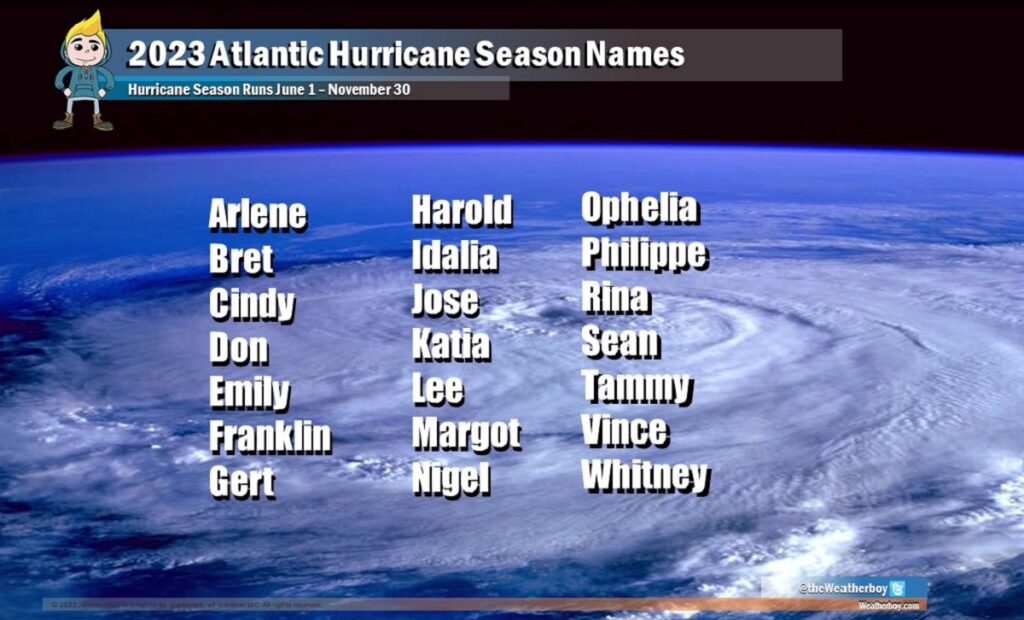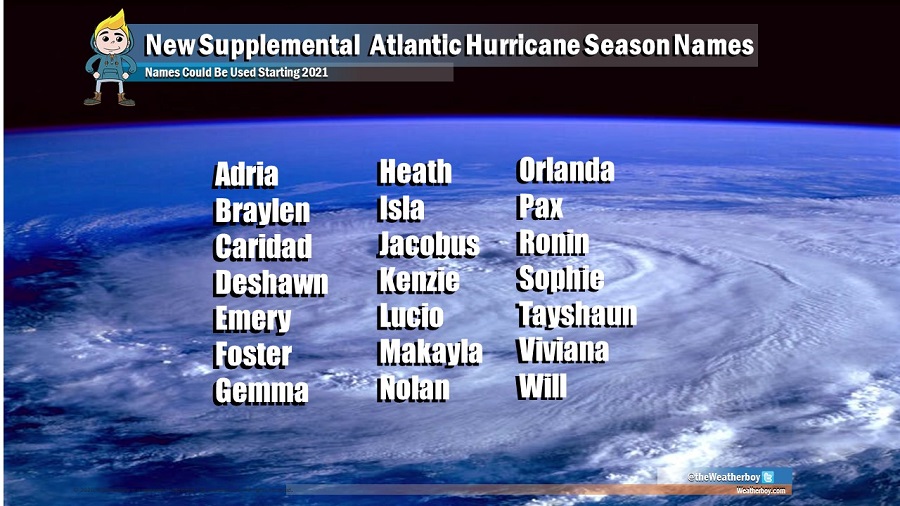
With the 2023 Atlantic Hurricane season beginning on June 1, it’s important to become familiar with all aspects of the season before storms arrive. When the National Hurricane Center upgrades a Tropical Depression to a Tropical Storm, the strengthened storm is given a name which it keeps should it be upgraded to Hurricane Status or weakens back to Tropical Depression Status.
The list of names are maintained by the United Nation’s World Meteorological Organization. Currently, only tropical cyclones are named in an official capacity; winter storms are not. The World Meteorological Organization from the United Nations develops a list of names for each ocean basin. In the United States, the National Hurricane Center maintains lists from the WMO for Atlantic Basin and eastern Pacific basin storms. Storms that form near Hawaii come from a list managed by the Central Pacific Hurricane Center.
Storms are named in alphabetical order each season. “It is important to note that tropical cyclones/hurricanes are named neither after any particular person, nor with any preference in alphabetical sequence,” states the WMO. “The tropical cyclone/hurricane names selected are those that are familiar to the people in each region.”
Storms responsible for significant death/destruction are retired at annual WMO meetings. This is why there will never be another Harvey, Maria, Katrina, Sandy, or Andrew. The WMO selects new names each year to replace the retired names. Otherwise, storm names are recycled every 6 years.
If a storm forms in the off-season, it will take the next name in the list based on the current calendar date. For example, if a tropical cyclone formed on December 28th, it would take the name from the previous season’s list of names. If a storm formed in February, it would be named from the subsequent season’s list of names.

Prior to 2021, if the names list was exhausted, Greek letters would be used to label storms. However, ahead of the 2021 season, Hurricane Committee members agreed to create a supplemental list of names A-Z (excluding Q, U, as well as X, Y, and Z on the Atlantic list) that would be used in lieu of the Greek alphabet when the standard list is exhausted in a given season. Names on this list could be retired and replaced, when required. Names beginning with Q, U, X, Y and Z are still not common enough or easily understood in local languages to be slotted into the rotating lists.
The decision to move away from Greek letters was made by different reasons that surfaced in 2020’s hyper-active hurricane season. According to then-National Hurricane Center director Ken Graham, who now serves as the Director of the National Weather Service, there can be too much focus on the use of Greek alphabet names and not the actual impacts from the storm. Graham said he received a large volume of phone calls when the name “Zeta” was used, detracting from the impact and safety messaging that should have been shared. Additionally, there is confusion with some Greek alphabet names when they are translated into other languages used by the region.
“There was confusion with translation and pronunciation in foreign languages, which led to confusion,” Graham said. The region encompasses areas where English, Spanish, French, and Portuguese are spoken, and sometimes names don’t translate or pronounce well in other languages. In a written statement, the WMO wrote, “the pronunciation of several of the Greek letters (Zeta, Eta, Theta) are similar and occur in succession. In 2020, this resulted in storms with very similar sounding names occurring simultaneously, which led to messaging challenges rather than streamlined and clear communication.”
“The RA-IV Hurricane Committee’s work is critical to keep our nations coordinated well before the next storm threatens”, said Graham at the time of the switch. “Hurricanes don’t care about international boundaries. We all face similar dangers from tropical systems. Impacts from a single storm can affect multiple countries, so it is critical we have a plan, coordinate our efforts, and share challenges and best practices… This is a partnership; it’s a friendship. We’re in this together…to save lives …together striving to become weather ready nations.”